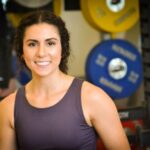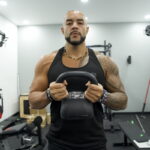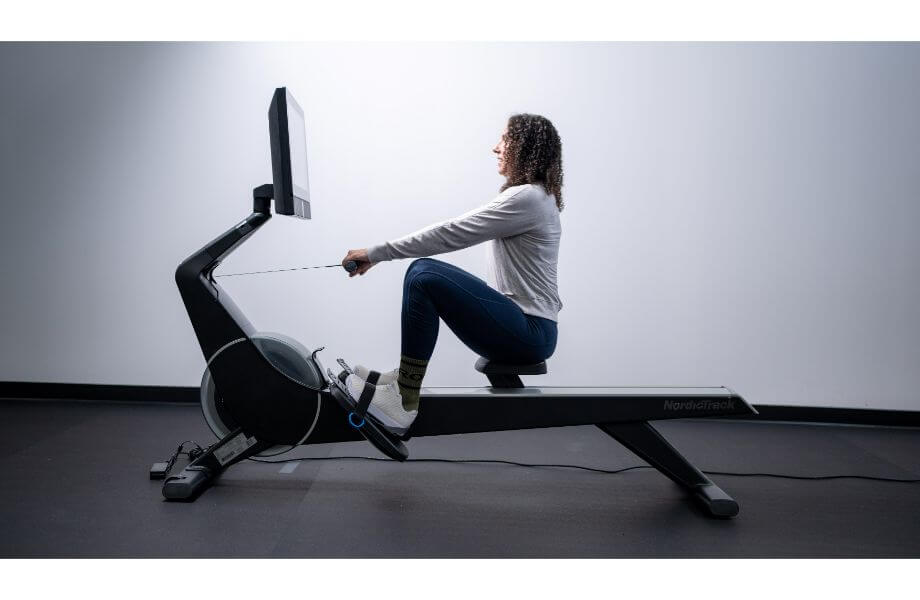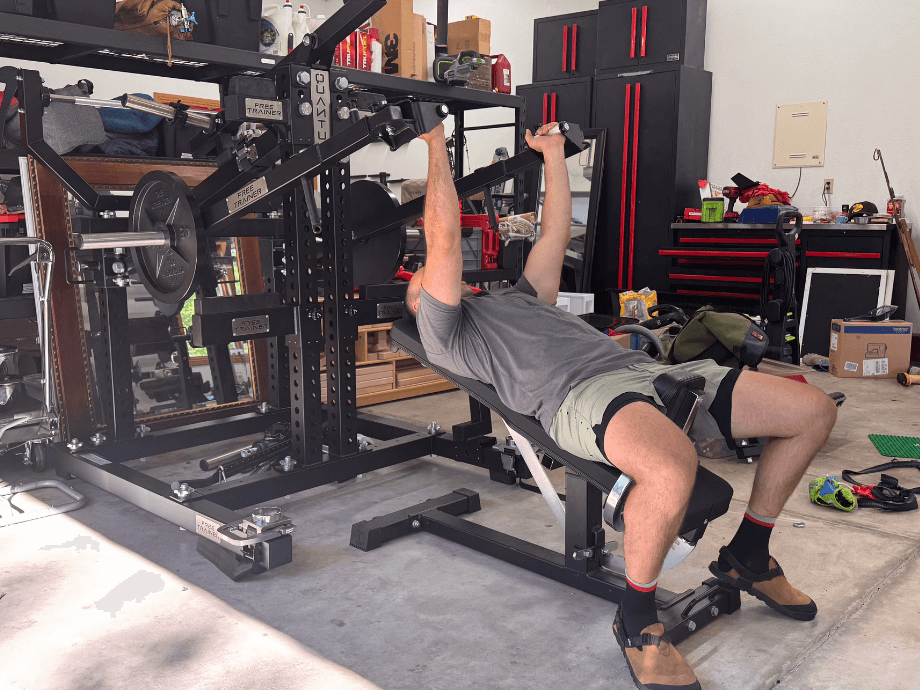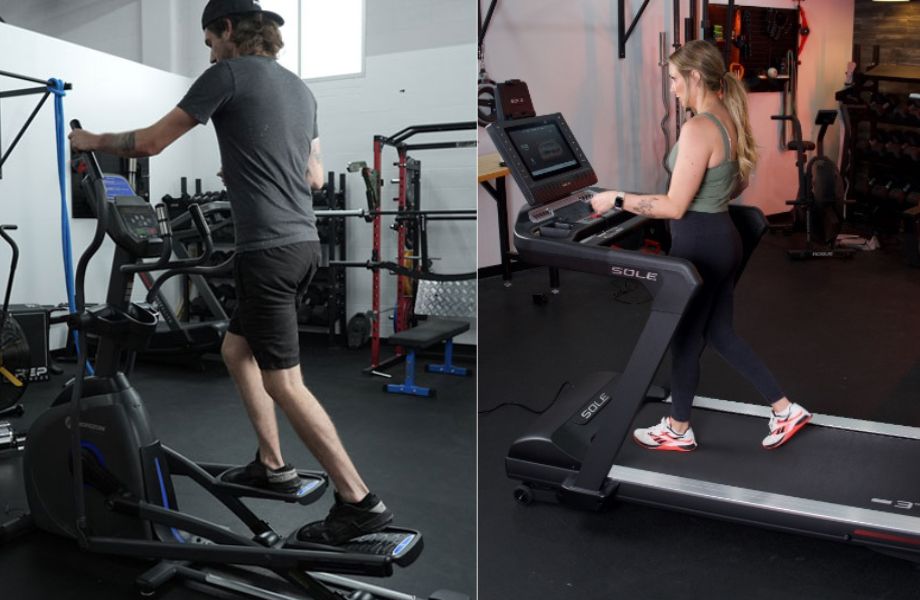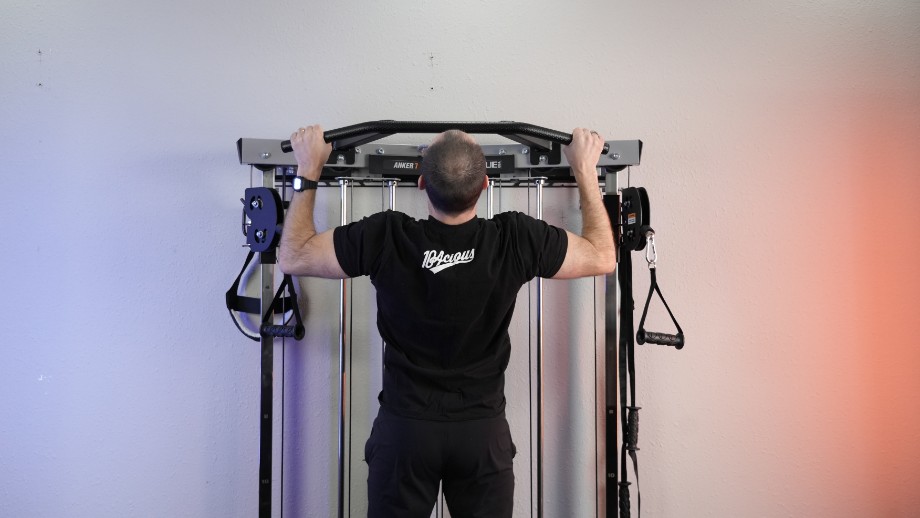Rowing is largely underutilized, but it’s arguably one of the best forms of cardio exercise.
Treadmills, ellipticals, and exercise bikes get a lot of time in the limelight, but there’s another piece of cardio equipment that should most definitely be in your regular rotation: a rowing machine.
Rowing machines offer serious aerobic exercise while also engaging all the major muscle groups, including your core. Rowing machine workouts give you efficient full-body work with minimal impact. Here, we’ll break down all the rowing machine benefits you should know.
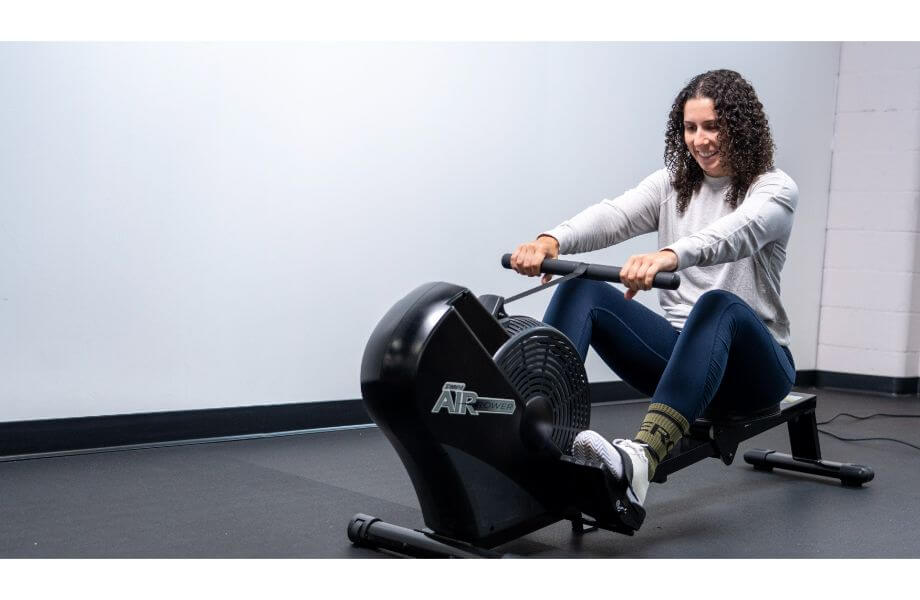
Key Takeaways
- Improved cardiovascular health, endurance, strength, and improved stress levels are a few benefits of rowing.
- Rowing exercises engage 86% of the muscles in your body1.
- The four positions in a rowing motion are the catch, the drive, the finish, and the recovery.
- Proper form for rowing2 includes keeping your knees straight and neutral, maintaining proper posture, and keeping your core engaged.
Medical disclaimer: This article is intended for educational and informational purposes only. It is not a substitute for health or medical advice. For medical advice, contact an appropriate healthcare provider.
13 Rowing Machine Benefits
Aside from improving your cardiovascular health and endurance, rowing can increase upper- and lower-body strength, contribute to weight loss, and even reduce your stress levels beyond boosting your endorphins.
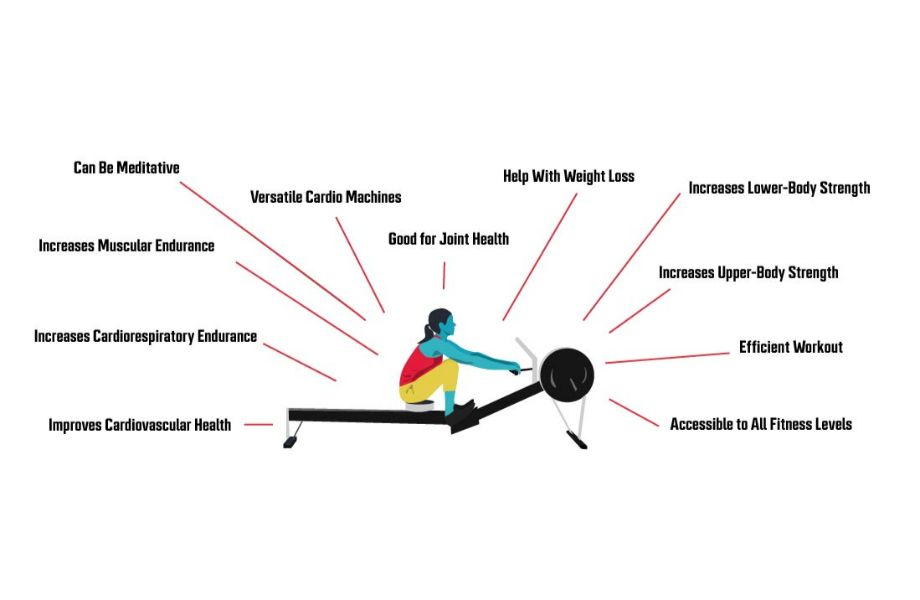
1. Rowing Helps Improve Cardiovascular Health
Because it’s primarily a cardiovascular exercise, rowing can help improve your heart health. Like other forms of cardio, rowing can increase cardio output3 and make your entire circulatory system more efficient. It can also reduce blood pressure and blood lipid levels, which can translate to a lower risk of heart disease4, if you row regularly.
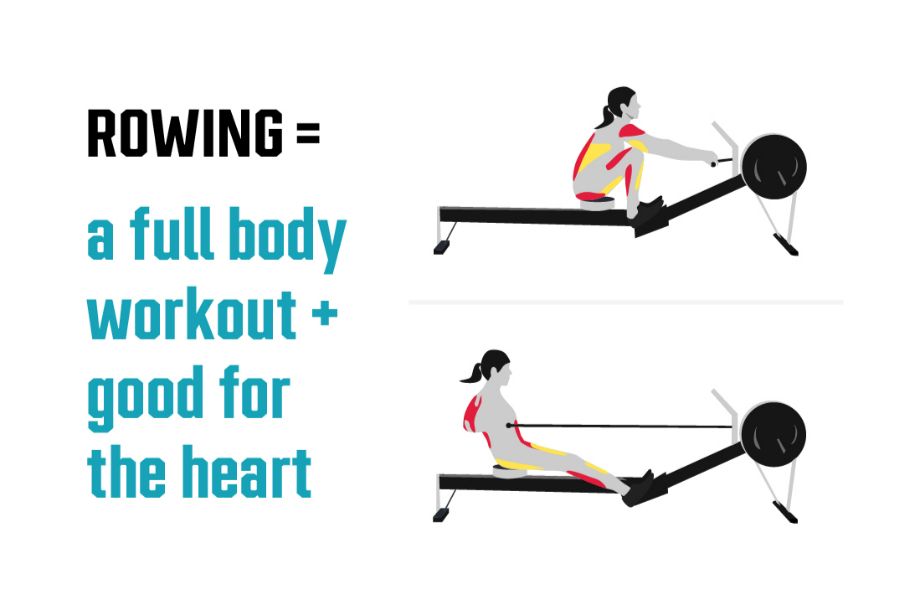
2. Rowing Increases Cardiorespiratory Endurance
In addition to improving your overall cardiovascular health, exercise like rowing also increases your cardiorespiratory endurance5, or how well your heart, lungs, and muscles can keep up with a high-intensity exercise. When you first start out, you may only be able to go for a couple minutes at high speed (if that), but the more you row, the longer you’ll be able to keep up your pace.
While all cardio exercises have this effect, rowing has a distinct advantage: It’s one of the few exercises that engages all of the major muscle groups, according to Caley Crawford, NASM-certified personal trainer and Director of Education for Row House, who adds that this activation of these large muscle groups can also have a positive effect on the cardiovascular system.
3. Rowing Increases Muscular Endurance
Though rowing is typically seen as a type of cardio exercise, it doubles as strength training, too. Rowing can increase muscular strength and endurance, or the ability of your muscles to exert force during exercise.
In other words, the more you row and develop the associated muscles, the longer you’ll be able to continue exercising before you reach muscle fatigue. That’s because rowing utilizes all the major muscle groups, thanks to the pushing and pulling motions against the resistance of the flywheel.
4. Rowing Can Be Meditative
The repetitive motion of rowing can also help relieve stress. “The rhythm involved in rowing is very meditative and not only releases tension in muscles, but also relieves [mental] tension, increasing mental clarity and focus,” says Crawford.
Like other forms of exercise, rowing also releases endorphins (neurochemicals that can boost mood and help reduce pain perception6) while also reducing cortisol, the primary stress hormone. While any exercise can have a positive effect on your mood, high-intensity interval training (HIIT7), which you can easily accomplish on a rowing machine, seems to trigger the most significant boost in endorphins.
5. Rowing Is Good for Joint Health
Because rowing is a low-impact exercise, it’s gentler on your joints than higher-impact exercises, like running.
Rowing can condition your joints and muscles without putting excess strain on them, and it can help increase flexibility and minimize stiffness since it involves a wide range of movement, according to Crawford.
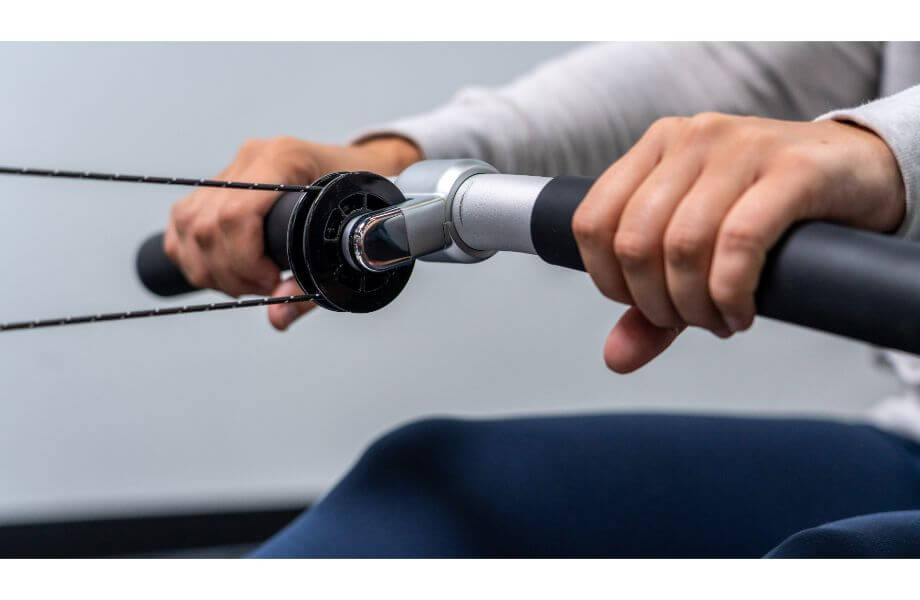
She adds that with proper form and technique, one benefit of a rowing machine is that it also leaves little room for injury and achy knees, ankles, and feet—a far cry from the high-impact pounding of running or plyometrics.
RELATED: Rowing Vs Running
6. Rowing Increases Lower-Body Strength
When using an indoor rowing machine, you want to mimic the technique that’s used on the water. That means utilizing a combination of pushing off with your legs and pulling with your arms.
The push motion, which is the first step in proper rowing form, engages the quads, glutes, and hamstrings, providing an effective lower body workout that can ultimately increase your lower-body strength over time.
7. …And Increases Upper-Body Strength
After the push comes the pull. As your legs reach full extension, you’ll want to lean back, creating a 100-degree angle between your legs and core. When you’re just about in the full leaning position, you’ll pull on the rowing machine handle, relaxing your shoulders and keeping your arms straight and in line with the flywheel.
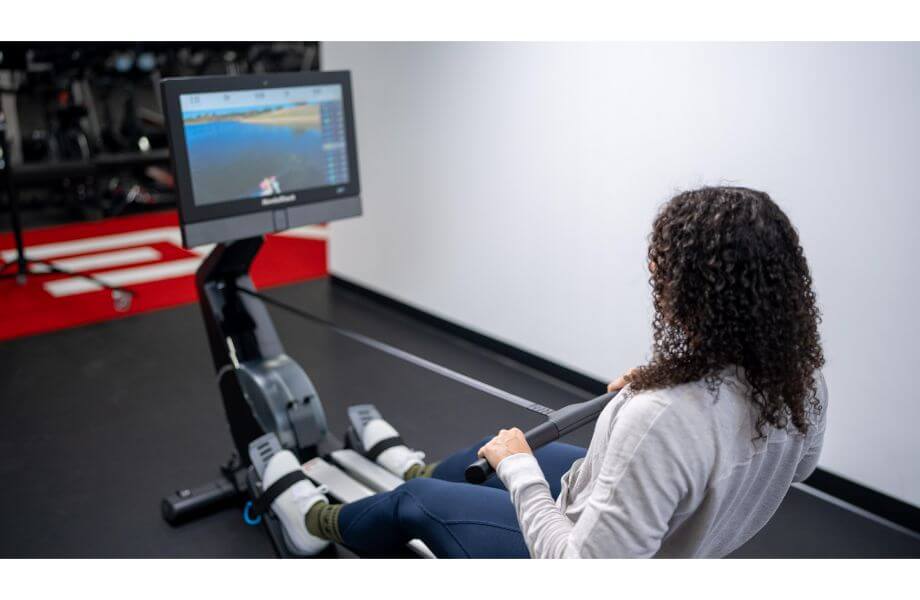
Since the flywheel provides resistance on the pull motion, this movement activates your delts, biceps, triceps, and pectoral muscles. It also engages your back muscles (latissimus dorsi, trapezius muscles, and rhomboids) and works your abdominal muscles and obliques, aka the core.
8. Rowing Is an Efficient Workout
If you’re looking for efficiency, rowing is the way to go.
“The effort required to row prevents you from slacking during your workout, allowing you to get impressive results from rowing for a short time,” says John Gardner, a NASM-certified personal trainer and the CEO and Co-Founder behind Kickoff, a remote personal training platform.
“In fact, just 30 minutes of [steady-state] rowing will burn 300 calories depending on your weight and intensity,” he says.
If you incorporate principles of HIIT, you can get an intense workout in less than 20 minutes. Combining rowing sprints with cross-training exercises, such as squats or push-ups, is a quick and effective way to build muscle and stamina simultaneously.
9. Rowing Is Accessible to All Fitness Levels
Because rowing is low-impact and easy to pick up, once you’ve had a little practice perfecting your form, it’s a cardio workout that’s accessible to all fitness levels. There’s no huge learning curve and you don’t have to be in tiptop shape to start.
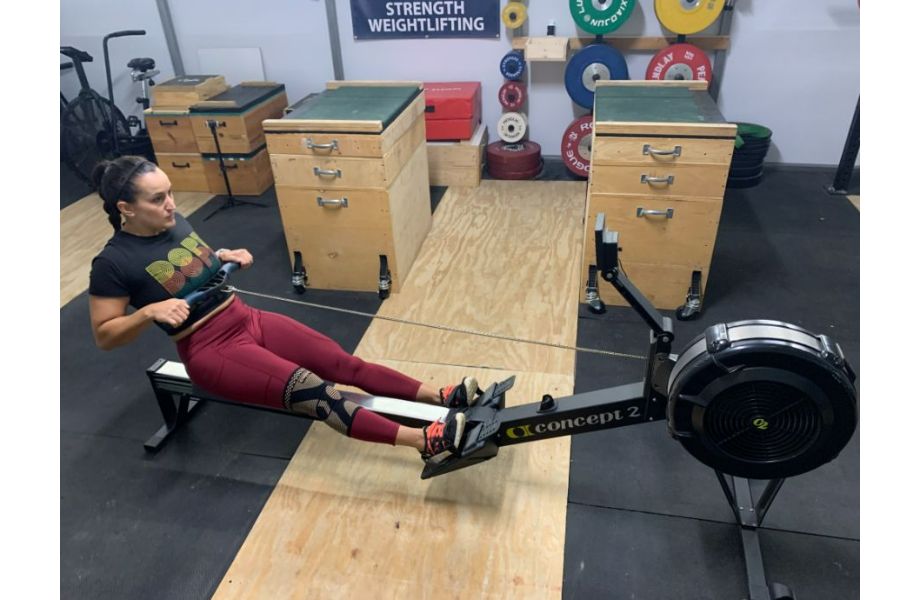
Rowing is an excellent workout for beginners since it’s an easy way to get in a quick full-body workout, according to Crawford, who says it’s best to start out slowly. “Maybe start by rowing for 3 to 5 minutes just so you can get your technique down. Once you nail the technique, that’s when a beginner can begin rowing for longer periods of time.”
10. Rowers Are Versatile Cardio Machines
According to Gardner, rowing is a versatile workout that can act as high-intensity resistance training and cardio all at once. “The movement is very challenging and works numerous muscles together, allowing you to maximize your results,” he says.
“The pull action makes it an excellent resistance training workout, and because you can make it your own, you can use HIIT intervals such as 20 seconds maximum rowing speed, 10 seconds rest, or 50 seconds 80% maximum effort and 10% minimum effort.”
11. Rowing Burns Calories, Which Can Help With Weight Loss
Because rowing ergometers allow you to get a full-body workout in, they’re effective calorie-burners, too.
“You no longer need to spend all your time on cardio machines to burn a lot of calories,” says Crawford. “By rowing for about 30 minutes you can burn up to 300 calories. By rowing, for about 60 minutes you can burn up to 600 calories.”
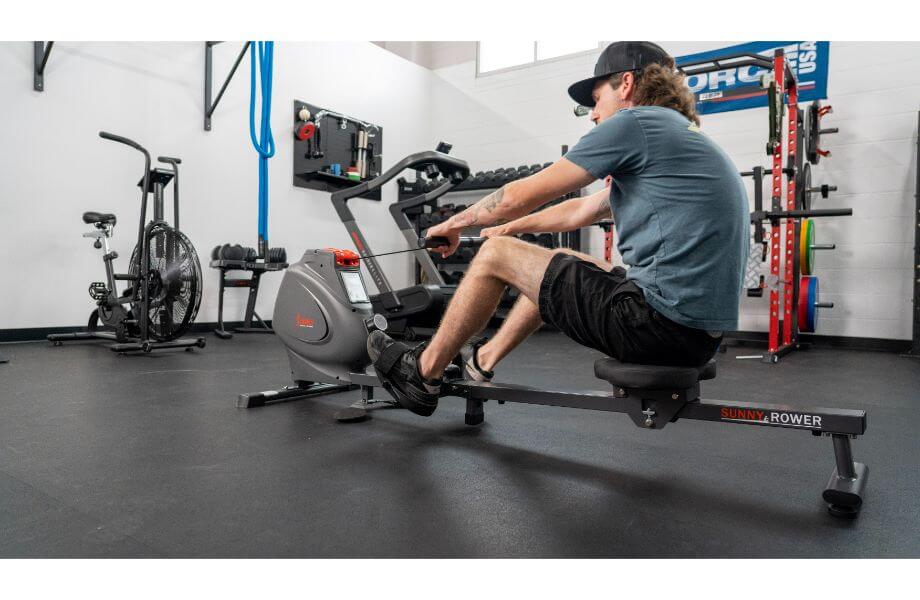
But it’s not just about the calorie burn. A 2021 study8 compared the rate of fat oxidation (or fat burning) between cycling and rowing. This study found that even at the same rate of intensity and calorie burn, rowing led to higher rates of fat oxidation in active men and women. However, it’s important to remember that nutrition is also key to long-term successful weight loss.
12. Rowing Can Help Improve Your Posture, Balance, and Coordination
A full-body exercise that takes place from a seated position, rowing can have a positive carryover when you’re on your feet. The upper-back and core muscle engagement can encourage proper body position, allowing you to enjoy the benefits of good posture. Improved leg strength can also help you maintain better balance.
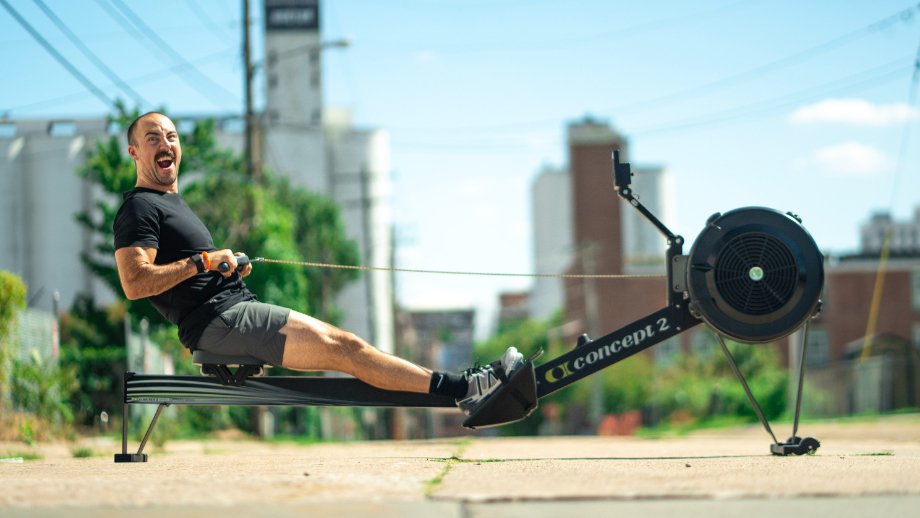
In addition, executing the four phases of rowing efficiently requires excellent coordination. Although most beginners need plenty of practice to hone their technique, eventually the motion should become second nature. Improving your coordination and synchronization can help with other compound exercises that involve multiple steps.
RELATED: Balance Exercises
13. Rowing is a Total-Body Workout
When you call it a total-body or full-body workout, rowing definitely takes the “all hands on deck” approach. Unlike isolation exercises that target a specific muscle group, rowing gets everyone involved—recruiting your legs for the drive phase, your arms for the finish phase, and your core muscles for the entirety of the exercise. Whether you do a HIIT rowing workout or a low n’ slow steady-state session, every body part must step up.
How To Use a Rowing Machine
When it comes to using a rowing machine like the Concept, proper technique is everything. There are four main positions in a full rowing motion—catch, drive, finish, and recovery—and timing each movement correctly is the path to the ideal rowing form.
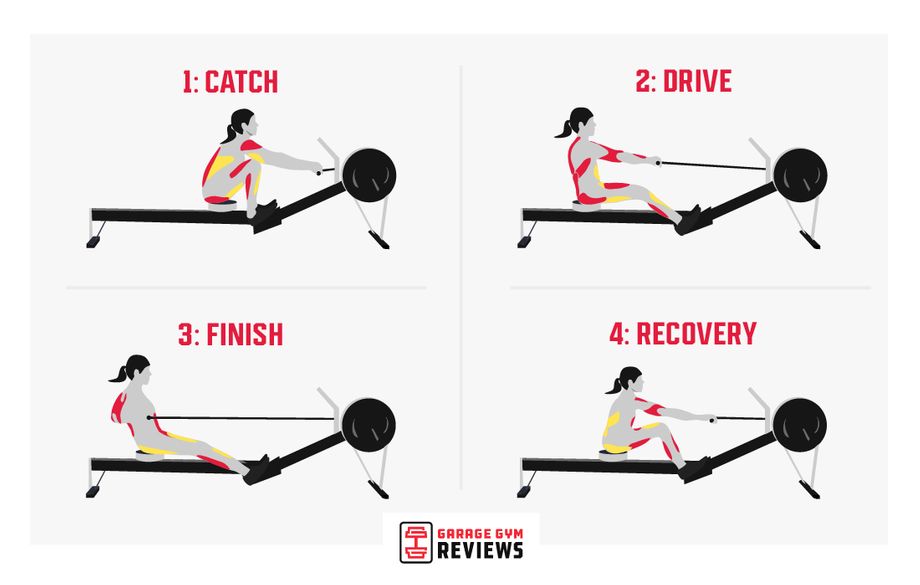
1. Catch
The catch is the starting position, or the beginning of your rowing stroke. Sit on the seat with your knees bent and feet secured using the straps. Then, grab the handle attached to the flywheel. Maintain a slight forward lean, keeping your arms extended and your shins vertical.
2. Drive
The drive is when you use your legs to push off and start your stroke. First, engage your core muscles and use knee extension to drive the seat back. The second part of the drive phase occurs when your legs come to full extension. As you open your hips, lean back slightly, keeping your arms fully extended.
3. Finish
The finish is when you lean and pull against the flywheel with your arms. This phase involves using your rhomboids, lats, and upper-back muscles to pull the handle into your chest. Your shoulders should be slightly behind your hips at the conclusion of the stroke.
4. Recovery
Recovery involves bending your arms, releasing resistance, and returning to the starting position, or catch, to get ready for the next stroke. Equally important as the power-producing drive phase, the recovery puts all the elements in reverse. Glide forward to bend your knees, extend your arms, and let the handle move toward the flywheel in a smooth, controlled motion.
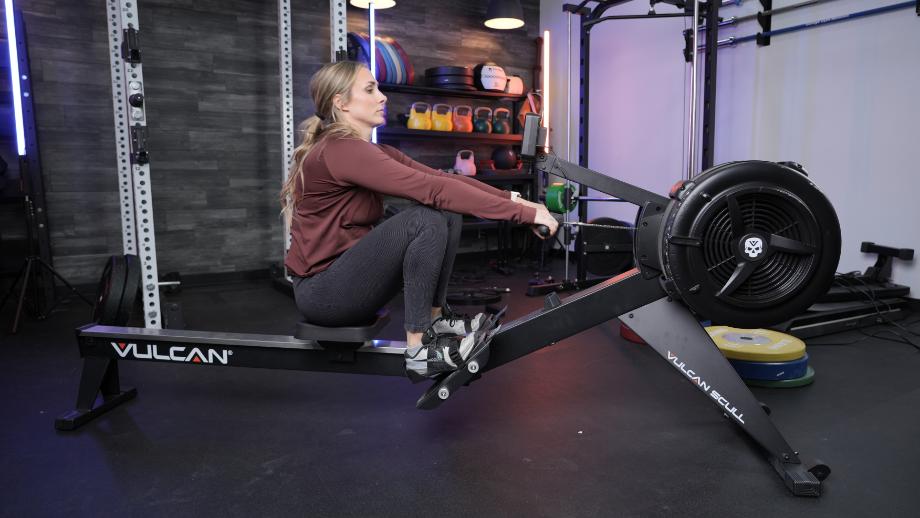
Expert tip: In all positions, “You want to sit tall, engaging your core muscles, and have your toes pointing away from you to start,” says Crawford. “Don’t bend your back; you want to rock your hips and focus on extending your chest.”
If you want to dive deeper into how to use a rowing machine, our in-depth guide on how to use a rowing machine with the correct form and technique is all you’ll need (and you can get a free total-body workout while you’re at it).
Parts of a Rowing Machine
Understanding how a rowing machine works can ensure you use it safely and efficiently. Luckily, this popular piece of home gym equipment isn’t too complicated.
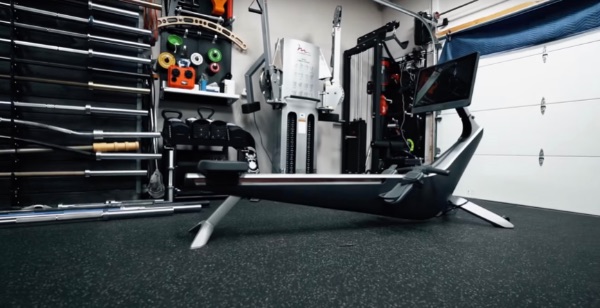
Here’s a quick rundown of the different parts of a rower:
- Handle: The handle allows you to maintain control throughout the rowing stroke. Using a pronated (palms-down) grip emulates pulling an oar in the water. Angled handles with an ergonomic grip can encourage a more natural pulling motion.
- Seat: The seat mounts to the rail, allowing you to slide back and forth in a smooth, fluid motion. Some machines, such as the Concept2 RowErg, come in multiple seat height options to accommodate taller users.
- Footplate: The footplate gives you a platform to transfer power during your rowing stroke. This part of a rowing machine features straps to keep your feet anchored so you don’t fly off the seat mid-stroke.
- Rail: Typically made of steel, the rail plays a pivotal role in providing a stable rowing experience. A thin rail can cause wobbling as the seat moves back and forth.
- Resistance Mechanism: Whether it’s air, magnetic, or water, the resistance mechanism will determine how much effort and grit you need to put in to complete your stroke.
- Monitor: Depending on the machine, the monitor may only display basic stats like duration and stroke rate. On the other hand, some high-end ergs have touchscreen monitors that allow for a more interactive experience.
Rowing Safety Tips and Precautions
Whether you’re using one of the best budget rowing machines or a premium model like the highly rated Concept2 RowErg, you need to pay attention to key factors like your form, heart rate, and body position. Keep these safety tips and precautions in mind so you can get the most out your time on the erg:
- Make sure you have sufficient space to complete the full rowing motion. The last thing you want is to bang into the side of your squat rack mid-stroke.
- Always start with a warm-up so your mind and body can prepare for the intensity of the workout. Take 5 minutes to ramp up your heart rate, increase blood flow, and get in rhythm before you pick up the pace.
- Keep your core engaged at all times to reduce strain on your lower back and avoid injuries. This is particularly important during the drive phase, as you must lean back slightly to get full leg extension.
- Pay attention to your heart rate by wearing a fitness tracker or heart-rate monitor. This will allow you to make adjustments to your stroke rate so you’re working at the right intensity level. Some machines, such as the NordicTrack RW900 Rower, have built-in heart-rate monitor capabilities.
- Always end with a cool-down to bring your heart rate back to baseline. This could involve several minutes of slow-paced rowing, followed by static stretches and mobility work.
RELATED: Cool-Down Exercises
How to Choose The Right Rowing Machine
Just like barbells, kettlebells, and dumbbells, not all rowing machines are built the same. For example, the best rowing machines under $300 don’t have all the bells and whistles of higher-end models like the ProForm 750R Rower, which folds up and has iFIT compatibility.
Here are key factors to consider if you’re looking to outfit your home or garage gym with an erg machine:

Construction
At GGR, we recommend rowing machines that are well-built. This includes clean welds, a smooth-rolling seat, and a freely spinning flywheel. Just like any piece of gym equipment, you want a rower that looks and feels solid so you can train without any worries.
Durability
While weight plates and dumbbells must withstand quite a bit of punishment, an erg has a much easier life. Rowing machines should last for many years, if not decades. Whether you crank up the intensity for sprint intervals or dial it back for a beginner cardio workout, your rower should remain stable and secure.
Type of Resistance
You have four resistance options for rowing: hydraulic, air, magnetic, and water. We prefer air rowers like the Bells of Steel Blitz Air Rower or magnetic rowers like the Hydrow, as hydraulic rowers are typically used on cheaper machines. If you’re concerned about noise, go the magnetic route.
Monitor
Some monitors provide great insight into your workout data. Others simply list basic metrics like duration, and distance.
Available Space
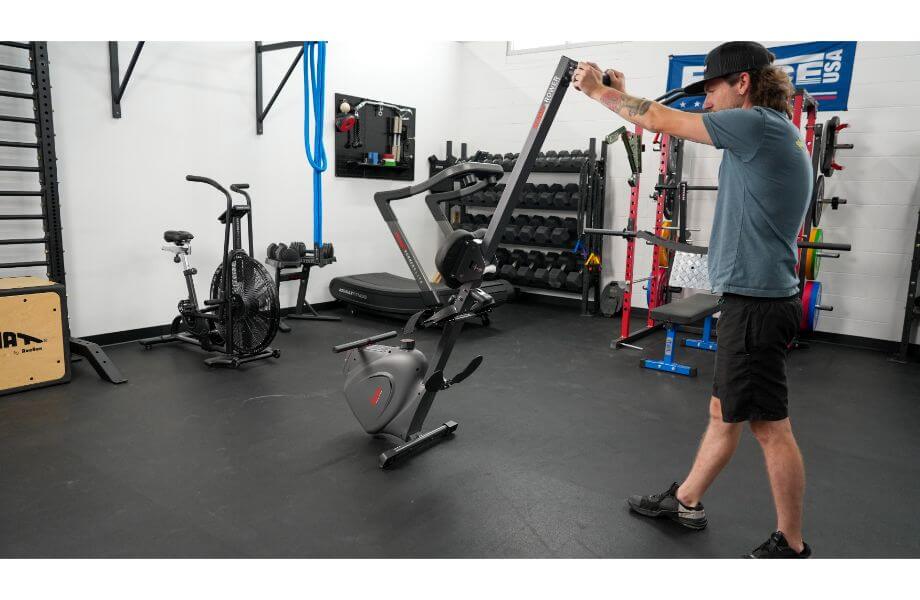
Make sure you have enough room to accommodate a fairly substantial piece of equipment. While models like the ProForm 750R can easily fold and store when not in use, that’s not always the case. Measure the space in your home or garage gym, and account for your height so you choose a machine that suits your body type.
Tech Capabilities
Are you OK with just a small digital monitor for displaying basic data? Or do you prefer something with a high-definition touchscreen, such as the Ergatta Rower, that shows scenic routes during your workout? Keep in mind that more tech capabilities means a higher price tag.
Budget
Speaking of price, figure out how much you’re willing to spend on a machine that can provide an excellent full-body workout. Our best water rowing machine, the WaterRower Natural Rowing Machine, costs just over $1,100— about $700 less than what you’d pay for our top-rated elliptical machine. Meanwhile, the best magnetic rowing machines can cost well over $2,000, making them a poor choice for budget-conscious fitness enthusiasts.
Experts Who Contributed To This Article
- Caley Crawford, NASM-CPT, Director of Education for Row House
- John Gardner, a NASM-CPT, CEO and Co-Founder of Kickoff | Online Fitness Coach
- Amanda Capritto, CPT, CES, CNC, CF-L1, CSNC
- Stephen Sheehan, CPT, CNC
Rowing Machine Benefits: FAQs
What can a rowing machine do for your body?
Rowing machines provide a whole-body workout that can help improve cardiovascular health, and cardiovascular and muscle endurance, while also strengthening your upper and lower body.
Is 20 minutes of rowing enough?
With a higher intensity, 20 minutes of rowing may be enough, but 30 minutes is better for reaping the general health benefits of rowing. If you row for 30 minutes, five days a week, you’ll hit 150 minutes of weekly exercise as recommended by the Department of Health and Human Services’ Physical Activity Guidelines for Americans9.
Can you lose belly fat on a rowing machine?
While you can use a rowing machine to burn calories and support your weight-loss efforts, there’s no method on how to lose body fat in specific areas, as spot-targeting is a myth.
Can you get in shape by just rowing?
As a full-body exercise that engages your legs, core, and upper body, rowing can be an effective way to get in shape. Although it offers cardiovascular and muscle-building benefits, I still recommend including at least two days of dedicated strength training in your workout routine for optimal balance.
References
- Letorney, A. (2023, June 7). Rowing machine muscles: What muscles do rowers work?. Hone Health. https://honehealth.com/edge/rowing-machine-muscles/
- Cleveland Clinic. (2024, June 27). 7 health benefits of rowing. https://health.clevelandclinic.org/rowing-machine-benefits
- Nystoriak MA, Bhatnagar A. Cardiovascular Effects and Benefits of Exercise. Front Cardiovasc Med. 2018 Sep 28;5:135. doi: 10.3389/fcvm.2018.00135. PMID: 30324108; PMCID: PMC6172294.
- Mersy DJ. Health benefits of aerobic exercise. Postgrad Med. 1991 Jul;90(1):103-7, 110-2. doi: 10.1080/00325481.1991.11700983. PMID: 2062750.
- Xiaochen Lin, MS, Xi Zhang, PhD, Jianjun Guo, MD, Christian K. Roberts, PhD, Steve McKenzie, PhD, Wen‐Chih Wu, MD, Simin Liu, MD, ScD Simin_liu@brown.edu, and Yiqing Song, MD, ScD. Effects of Exercise Training on Cardiorespiratory Fitness and Biomarkers of Cardiometabolic Health: A Systematic Review and Meta‐Analysis of Randomized Controlled Trials. Journal of the American Heart Association (AHA), Volume 4, Number 7. https://doi.org/10.1161/JAHA.115.002014
- Sprouse-Blum AS, Smith G, Sugai D, Parsa FD. Understanding endorphins and their importance in pain management. Hawaii Med J. 2010 Mar;69(3):70-1. PMID: 20397507; PMCID: PMC3104618.
- Saanijoki, T., Tuominen, L., Tuulari, J. et al. Opioid Release after High-Intensity Interval Training in Healthy Human Subjects. Neuropsychopharmacol. 43, 246–254 (2018). https://doi.org/10.1038/npp.2017.148
- Astorino TA, Oriente C, Peterson J, Alberto G, Castillo EE, Vasquez-Soto U, Ibarra E, Guise V, Castaneda I, Marroquin JR, Dargis R, Thum JS. Higher Peak Fat Oxidation During Rowing vs. Cycling in Active Men and Women. J Strength Cond Res. 2021 Jan 1;35(1):9-15. doi: 10.1519/JSC.0000000000003888. PMID: 33136770.
- U.S. Department of Health and Human Services. Physical Activity Guidelines for Americans.


